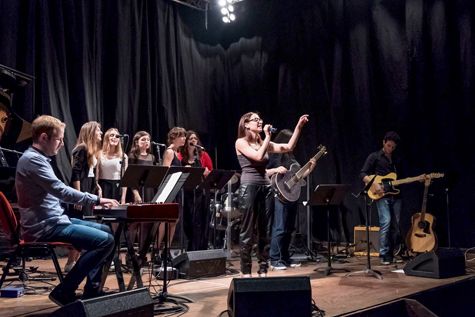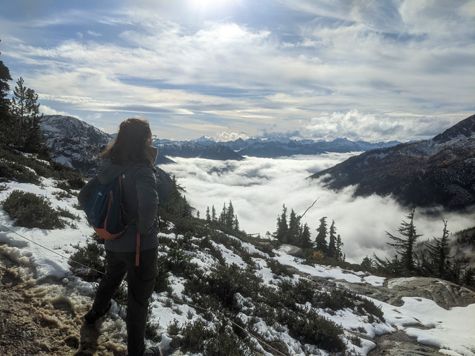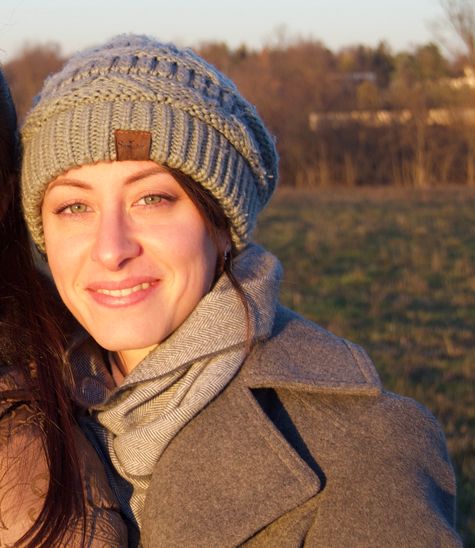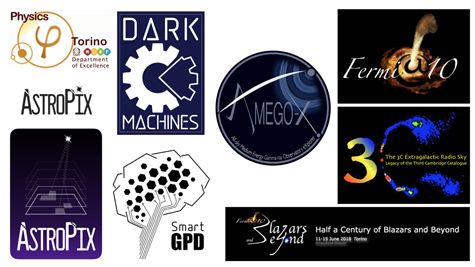Early Career Scientist Spotlight
Dr. Michela Negro (she/her/hers)
High-Energy Astrophysicist
Astroparticle Physics Laboratory (661)
Did you always know that you wanted to be an astrophysicist?
Absolutely not. I’ve always liked the natural sciences in general, but I also enjoyed studying arts and literature. Before choosing the scientific-oriented high school (“liceo scientifico” in Italian), I wanted to study what we call “white art”, which is the art of baking. During my high school studies, I found myself to be passionate about classic and modern literature (how can you not when studying the rhythmic tercets of La Divina Commedia?), biology, philosophy, graphic arts, and architecture. It was only in the last year of high school that I learned about electromagnetism and special relativity, and discovered my deep curiosity about Physics. I needed to know more about it! I ended up doing astrophysics among all the fields (and after mastering in Nuclear and subnuclear physics) mostly due to my tendency toward space science. It was probably transmitted to me by my father and his stories about being part of the engineering team working on the design of the Columbus module which has been flying on board of the International Space Station (ISS) since 2008.

Credit: Cristina Rulfi
What is one research project that you are particularly excited about, and why?
The most exciting research project I’m currently working on regards a search for extragalactic magnetar giant flares in the archival data of the Fermi gamma-ray observatory. Last year, I (as PI), along with a group of brilliant scientists who I’ve the pleasure to work with, was awarded a large grant to access this search by the Fermi guest investigator program. We are working on the analysis pipelines right now, and we are looking forward to sharing our results with the community (hopefully soon). Magnetars are very intriguing and extreme objects. They are young neutron stars with a very, very strong magnetic field (about 100 billion Tesla! A thousand times stronger than regular neutron stars). Magnetars keep coming up in several topical studies in physics and astrophysics, from gamma-ray bursts to gravitational waves to fast radio bursts from QED to plasma and condensed matter. Advancing our knowledge of magnetars has a much broader impact than simply unveiling these “cool” objects!
Credit: Michela Negro
What science question intrigues you the most?
How does the Universe evolve and how did it evolve in the past? High-energy astrophysics is usually associated with the study of single astrophysical sources targeted to investigate the physical processes behind the production of the high-energy emission. However, I tend to prefer population or statistical studies which can tell us more about the “big picture” of how we ended up with the Universe we observe today. My PhD study was a measurement of the anisotropies of the gamma-ray background; this measurement reveals that the fluctuation field of the gamma-ray background is the result of the emission from faint sources (too dim to be detected individually). I have been working with some colleagues to determine the physical interpretation of these anisotropies, and we just submitted our results. We find that two distinct populations of blazars are needed to explain the observed anisotropy spectrum. The gamma-ray background anisotropy is linked to cosmology and the large-scale structures of the universe. For example, I’m currently working on a project involving the Dark Energy Survey Collaboration to measure the cross-correlation between the gamma-ray background (sliced in energy bins) and the cosmic shear from weak lensing (sliced in redshift bins). This study will probe the connection between the gamma-ray emission and the dark matter distribution at different epochs of the Universe.
What is one of your favorite moments in your career so far?
My favorite moment in my career was the announcement of the detection of the first gravitational wave from a neutron star merger in 2017. It opened the new era of the multi-messenger astrophysics, and I really felt pride at being a part of the scientific community in this historic moment. In particular, as part of the high-energy astrophysics community, I was particularly proud of the invaluable contribution that gamma-ray observatories played, enabling timely follow-ups and new physics measurements like the speed of gravity.

Credit: Michela Negro
What is an interesting problem or hurdle that you’ve overcome in your work?
During my PhD work (the gamma-ray background anisotropy measurement mentioned earlier), I encountered a technical problem in the data analysis and the specific technique we were using to compute the angular power spectrum. I won’t go into the boring details, but the issue was related to the random noise contribution to the signal that wasn’t properly captured by the standard algorithm. We ended up devising a new method to compute the autocorrelation angular power spectrum. We divided each energy bin into smaller energy bins, cross-correlated each one with the others, and then combined the results to obtain the actual anisotropy in each energy bin. When cross-correlating two independent samples (e.g. independent energy bins) the random noise contribution is zero! So, with this smart trick, we got rid of the problem instead of spending months attempting to dig into an old Fortran code looking for a way to fix the issue.
What early career advice do you have for those looking to do what you do?
I can think of 2 general pieces of advice: 1) Surround yourself with people that know more than you or you judge to be better than you in some aspect of the work-life that you wish to master yourself (e.g. organizational skills, focusing skills, work-life balance skills, etc). 2) Don’t be afraid to bother people asking for help, advice, clarifications, or collaborations. Single-author discovery papers are a legacy of the past; the probabilities of being an Einstein, even if not zero, are lower than probability of success for a diverse network of brains working together for a common purpose :)
Credit: Michela Negro
What is a fun fact about you?
I think this is more a “shameful” fact than “fun”, but anyway… my mom is from Naples and I like 7-Eleven pizza. She doesn’t know… and never will :) Also, along the line of breaking common Italian stereotypes, I don’t like espresso that much and I tried carbonara with ham instead of pancetta…and I liked it! Cappuccino after dinner still feels wrong to me, but at this point I have lost any credibility to judge.
Biography
Home Town:
Torino, Italy
Undergraduate Degree:
Bachelors in Physics, University of Torino, Torino, Italy
Post-graduate Degrees:
Masters in Nuclear and subnuclear Physics, University of Torino, Torino, Italy
PhD in Physics and Astrophysics, University of Torino, Torino, Italy



